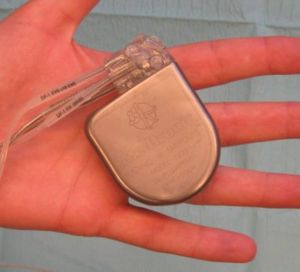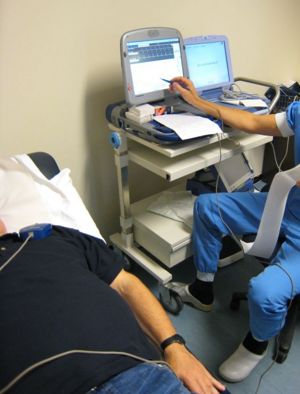ICD
ICD (Internal Cardioversion Device): this device can detect and treat ventricular tachycardia and ventricular fibrillation. Usually the first treatment is anti-tachy pacing (pacing at a rate +- 10% above the ventricular rate in ventricular tachycardia, which can convert the rhythm to sinus rhythm). If this is not effective an defibrillator shock is delivered, usually with 16-36 Joules of energy. ICDs can save lives in patients who have a high risk of ventricular arrhythmias. All ICDs have optional pacemaker activity to treat bradycardias. New biventricular ICDs have 3 leads: an atrial lead, a left ventricular lead and a right ventricular lead.
File:ICD implantation.jpg
An ICD is implanted using local anesthesia. The intracardiac wire is positioned using fluoroscopy

